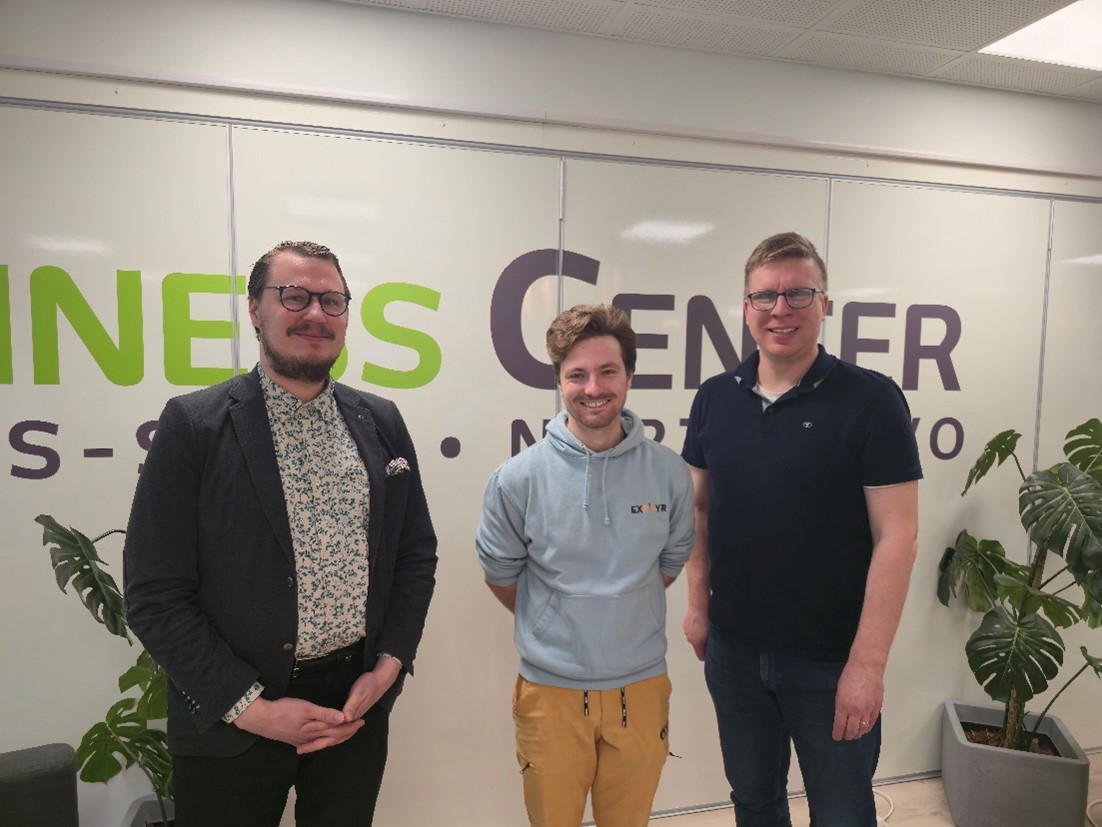
Savonia Article Pro: Building Entrepreneurial Bridges Across Europe: Insights from the Second EU4Dual Entrepreneurship Mobility at Savonia University of Applied Sciences
Savonia Article Pro is a collection of multidisciplinary Savonia expertise on various topics.
This work is licensed under CC BY-SA 4.0
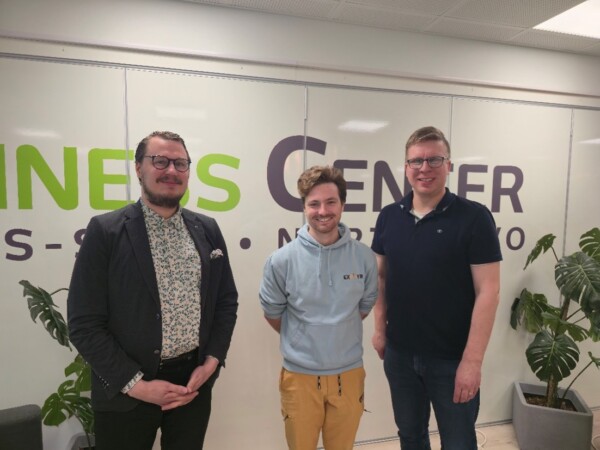
International mobility as a tool for entrepreneurial learning
From May to July 2025, Savonia University of Applied Sciences hosted the second EU4Dual Entrepreneurship Mobility participant, continuing to develop a new European model for cross-border entrepreneurial learning. This initiative enables students to work on their own business ideas abroad, gaining real-world experience while strengthening their entrepreneurial mindset.
This approach reflects a broader trend in higher education: entrepreneurship is no longer taught only through lectures or case studies but through doing, testing, and experiencing. Entrepreneurial mobility represents a shift from theoretical learning to applied innovation, where universities act as ecosystems for experimentation and collaboration, also emphasizing pedagogical structures that support viable commercialization pathways.
At the European level, this focus is crucial. Many startups face what is known as the “double valley of death”, where promising innovations struggle first to reach the market and later to scale sustainably. Entrepreneurial mobility programs, such as this one offered by EU4Dual, aim to bridge these gaps by combining technical expertise with market understanding, giving early-stage entrepreneurs the skills and networks needed to turn ideas into viable businesses.
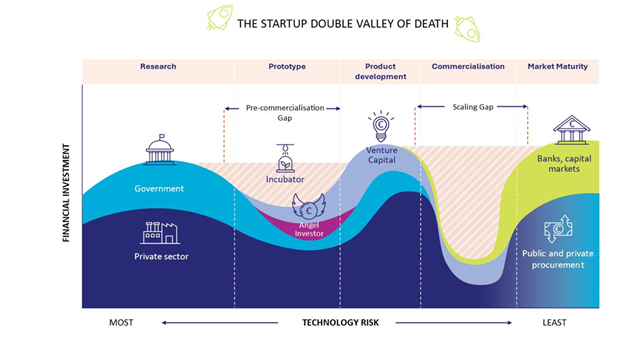
From the Basque coast to Kuopio: A Student’s entrepreneurial journey
Justin Linon, an engineering student from ESTIA Institute of Technology in France, came to Savonia to develop his own startup, Exp’Pyr, which designs innovative bike racks for electric bicycles. Instead of joining a company as an intern, Justin chose to focus on his own business, a choice made possible by the EU4Dual mobility model.
“This program allowed me to build something real,” Justin says. “Rather than working for an external company, I could apply my engineering skills directly to my entrepreneurial project.”
At Savonia University of Applied Sciences and Business Center Pohjois-Savo, a regional service network supporting innovation and commercialization, Justin spent two months combining engineering design with market understanding. He developed a working prototype, explored structural certification, and conducted a market study to understand customer preferences. Through mentorship from Savonia business coaches and innovation advisors Matti Laitinen and Harri Holopainen, he refined his product concept and identified user needs in a new market context.
Learning by doing and reflecting
What makes entrepreneurial mobility valuable is the integration of learning and doing. In Justin’s case, every phase of product development, from design and prototyping to testing and market analysis, was a learning experience.
He discovered, for instance, that older consumers prefer physical retail experiences to online purchasing, a finding that influenced his business strategy. He also developed new technical methodologies for weld design and testing, improving his engineering process while strengthening his business plan through feedback from Savonia’s mentors. During his stay, Justin reflected on the business model with Savonia’s Design Center, which supports companies in branding, service design, UI/UX, 3D modeling, and product concept development.
“I learned that innovation is not only about technology, but about understanding users,” Justin notes.
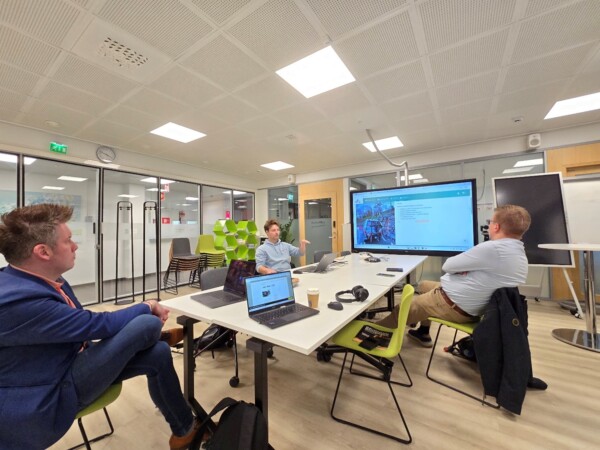
The Finnish way: collaboration and trust
One of the most impactful aspects of Justin’s stay was exposure to the Finnish way of working, characterized by trust, openness, and low hierarchy. The collaborative culture within Savonia’s entrepreneurial ecosystem allowed him to connect with professionals, mentors, and other innovators.
The Business Center North Savo approach, where education, business, and regional development meet, provided a natural platform for testing new ideas. This practical, trust-based atmosphere supported Justin’s independent project work and encouraged risk-taking in a safe learning space.
“This experience reinforced my conviction that innovation thrives on openness and collaboration,” he says.
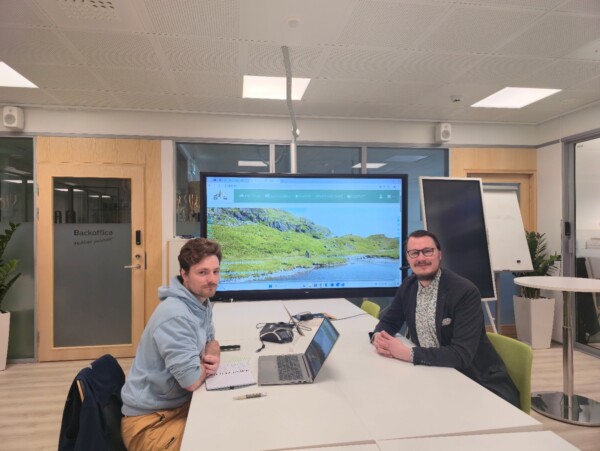
Lessons for higher education and entrepreneurship support
From Savonia’s perspective, the EU4Dual entrepreneurial mobility offers a new model for supporting student entrepreneurship. Rather than focusing only on academic exchange, the program supports students in developing their ventures across borders, strengthening both their professional identity and their ability to operate in international contexts.
This mobility model also highlights the value of interdisciplinary and intercultural learning. For example, an engineering student like Justin gains business understanding and cultural agility, while mentors and institutions learn from new perspectives brought by international entrepreneurs.
“Entrepreneurial mobility is a powerful way to learn by doing,” says Matti Laitinen, business coach at Savonia’s Business Center Pohjois-Savo. “It allows students to grow their business ideas in a real environment, supported by networks and international collaboration.”
A step toward the future of applied entrepreneurship
After returning to France, Justin continues developing his startup with the goal of launching his first product by the end of 2025. The experience in Finland not only advanced his prototype but also shaped his mindset as an international entrepreneur.
For Savonia, this second entrepreneurial mobility marks the continuation of a growing European collaboration under the EU4Dual University Alliance. Following earlier exchanges, Savonia University of Applied Sciences and ESTIA Institute of Technology are committed to expanding the model, creating new pathways for students and staff to engage in entrepreneurial learning beyond borders.
Entrepreneurial mobility programs such as this one demonstrate how universities and European partners can drive innovation and commercialization capacity across Europe. By merging education, experimentation, and cross-border collaboration, they help students transform their ideas into sustainable ventures, while enriching the professional practices of educators and institutions alike.
As Justin’s experience shows, international entrepreneurial learning is not just about launching products; it’s about building bridges between people, systems, and ways of thinking, and addressing one of Europe’s greatest challenges: turning innovation concepts into impactful innovations.
Authors:
Matti Laitinen, Innovation advisor, Business Center North-Savo, Savonia University of Applied Sciences
Phone +358 44 785 6333, matti.laitinen@savonia.fi
https://www.linkedin.com/in/mattislaitinen/
Harri Holopainen, Innovation advisor, Business Center North-Savo, Savonia University of Applied Sciences
ESTIA Entreprendre :
Dr Jérémie Faham, Start Up Manager, ESTIA Entreprendre, Hub Estia
Phone +33 699578133, j.faham@estia.fr
https://www.linkedin.com/in/j%C3%A9r%C3%A9mie-faham-0436335a/
Arnaud Catinot, Startup Manager, ESTIA Entreprendre, Hub Estia
References:
• EU4Dual University Alliance (2025). https://eu4dual.education/
• Business Center North-Savo (2025). https://bcpohjois-savo.fi/
• Exp’Pyr, – https://www.exppyr.com/
• Savonia University of Applied Sciences (2025). “First EU4Dual Entrepreneurship Mobility in Action.” https://www.savonia.fi/en/eu4dual/first-eu4dual-entrepreneurship-mobility-in-action/
• Savonia University of Applied Sciences (2025). “Unlocking Entrepreneurial Potential Across Borders.” https://www.savonia.fi/en/influence-stories/unlocking-entrepreneurial-potential-across-borders-a-new-model-of-entrepreneurial-mobility-from-eu4dual-network/
• iDual entrepreneurs https://eu4dual.education/learn/mobility-and-internships/idual-entrepreneurship/
• MOB’E initial initiative from HUB ESTIA
• The European Dual Studies University
• European Commission. (2025.). EU Startup and Scaleup Strategy: Choose Europe to start and scale (Document ID: 2f76a0df-b09b-47c2-949c-800c30e4c530). Retrieved from https://research-and-innovation.ec.europa.eu/document/download/2f76a0df-b09b-47c2-949c-800c30e4c530_en
• Savonia University of Applied Sciences. (2025). Suunnittelu- ja hyvinvointipalvelut (Design & Wellbeing Services) – Centers. Retrieved from https://www.savonia.fi/yrityspalvelut/centers